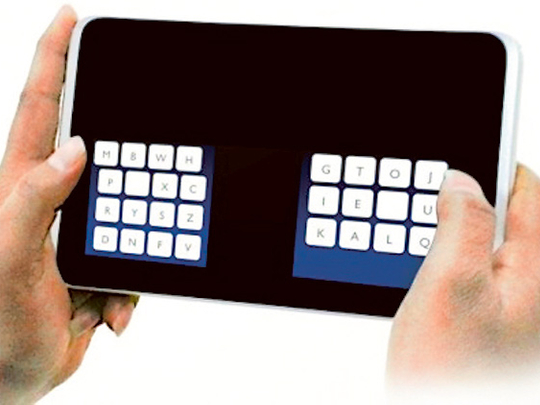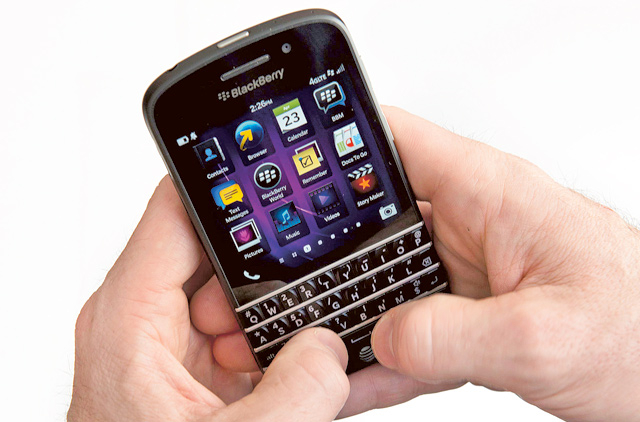
Dubai: If you find you are all fingers and thumbs when it comes to typing on a touch-screen device, help may be at hand.
A team of researchers has reimagined the old Qwerty layout for the digital era. Their new Kalq keyboard can speed up the number of words typed per minutby up to 34 per cent.
Typing with Qwerty is notoriously inefficient on touchscreen phones and tablets. The vowels and the most-used letters are spaced out, so thumbs have to work harder and cross over to type even basic words. But Kalq has a split layout, with the most commonly used letters clustered together.
This reduces the distance the thumbs travel and evens up the workload between the hands.
The original Qwerty keyboard was devised by Christopher Sholes, an American newspaper editor, in 1875. He rearranged the most-used letters to prevent key clashes, which jammed up the keyboard mechanism. Qwerty survived the move from typewriters to computer keyboards, but the Kalq team believe their option could be the future for hand-held tablets.
Dr Per Ola Kristensson, from St Andrews University, said traditional Qwerty keyboards had trapped users in “suboptimal text entry interfaces”.
The new design has been dubbed Kalq, after the order of keys on one line. Its creators used ‘computational optimisation techniques’ to identify which arrangement gave the best performance.
Researchers at St Andrews, the Max Planck Institute for Informatics in Germany and Montana Tech in the US joined together to create the virtual keyboard, which will be available as a free app for Android-based devices.
According to the research team, “two-thumb typing is ergonomically very different” from typing on physical Qwerty keyboards.
They claim normal users using a Qwerty keyboard on a touchscreen device were limited to typing at a rate of about 20 words per minute. This is much slower than the rate for normal physical keyboards on computers.
Researchers said the key to optimising a keyboard for two thumbs was to minimise long typing sequences that only involved a single thumb. It was also important to place frequently used letter keys centrally close to each other.
Finding the optimal layout involved minimising the moving time of the thumbs and enabling typing on alternating sides of the tablet.
The results were said to be surprising with all the vowels placed in the area assigned to the right thumb, whereas the left thumb is given more keys.
With the help of an error correction algorithm, trained users were able to reach a typing speed of 37 words per minute, researchers said.
Dr Kristensson, lecturer in human computer interaction in the School of Computer Science at the University of St Andrews, said: “We believe Kalq provides a large enough performance improvement to incentivise users to switch and benefit from faster and more comfortable typing.”













